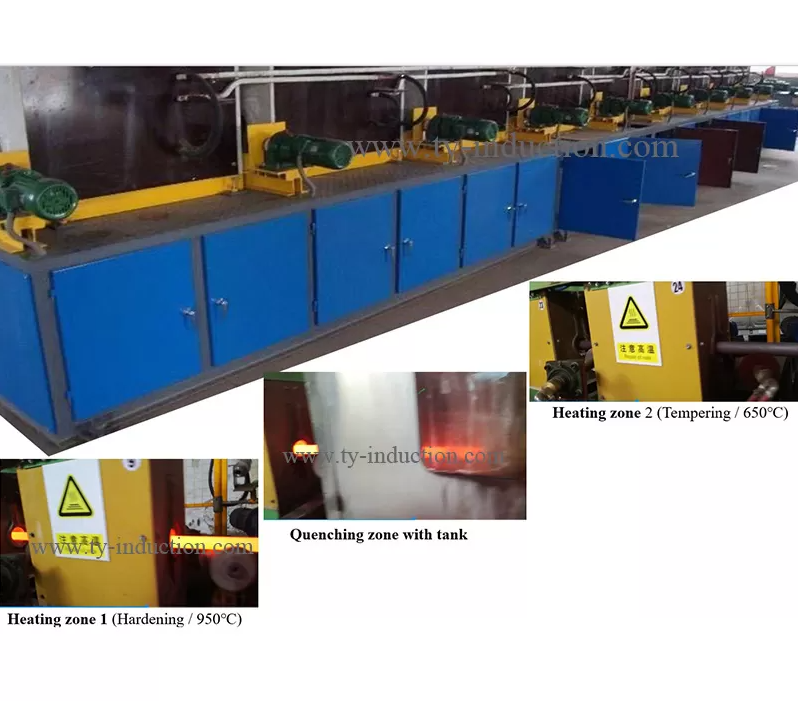In the realm of modern manufacturing, precision and efficiency are paramount. Enter induction hardening and tempering machine, the cutting-edge technology that has revolutionized the way we produce durable and high-quality metal components. From automotive parts to industrial machinery, these machines play a pivotal role in ensuring product longevity and performance. Let's delve into the intricacies of induction hardening and tempering machines, exploring their functions, benefits, and the impact they have on various industries.
Induction hardening and tempering machines are advanced industrial equipment designed to enhance the durability and strength of metal components through a process of localized heating and rapid cooling. These machines utilize electromagnetic induction to heat specific areas of metal parts quickly, followed by controlled cooling to achieve the desired hardness and resilience.

Superior precision and control over heat treatment processes
Increased efficiency and productivity in manufacturing operations
Enhanced durability and wear resistance of metal components
Reduced distortion and warping compared to traditional heat treatment methods
Induction hardening machines operate on the principle of electromagnetic induction. A high-frequency alternating current passes through a copper coil, creating a powerful magnetic field. When a metal component is placed within this field, eddy currents are induced within its surface, generating heat through resistance. The localized heating allows for precise control over the hardening and tempering process, resulting in consistent and uniform metallurgical properties.
Preheating: The metal component is heated uniformly to a predetermined temperature.
Induction Heating: Specific areas of the component are heated rapidly using high-frequency induction coils.
Quenching: The heated areas are rapidly cooled using quenching mediums such as water or oil, achieving the desired hardness.
Tempering: The hardened component is reheated to a lower temperature to relieve internal stresses and improve toughness.
Induction hardening equipment find widespread use across various industries, including:
Automotive manufacturing for engine components, gears, and transmission parts
Aerospace industry for turbine blades, landing gear, and structural components
Tool and die making for cutting tools, molds, and dies
Oil and gas sector for drilling equipment, valves, and pipelines
Modern induction hardening and tempering machines feature advanced control systems, precision monitoring sensors, and automated processes, allowing for greater customization and efficiency. These innovations enable manufacturers to achieve optimal results while minimizing energy consumption and waste.
The integration of robotics and automation into induction hardening and tempering systems has further enhanced productivity and quality control. Robotic arms facilitate the handling and positioning of workpieces, ensuring precise and consistent treatment, while automated feedback loops optimize process parameters in real-time.
In response to growing environmental concerns, manufacturers are adopting eco-friendly practices in induction hardening and tempering processes. Water-based quenching mediums, energy-efficient induction coils, and recycling systems contribute to reduced carbon footprint and resource conservation, aligning with sustainable manufacturing initiatives.
Induction hardening and tempering machines represent a paradigm shift in modern manufacturing, offering unparalleled precision, efficiency, and quality in heat treatment processes. From automotive to aerospace applications, these advanced machines continue to drive innovation and excellence across industries. As technology evolves and sustainability becomes increasingly important, induction hardening and tempering machines will play a crucial role in shaping the future of manufacturing.
Next: None.
Copyright:@2020-2021
Comments Please sign in or sign up to post.
0
0 of 500 characters used